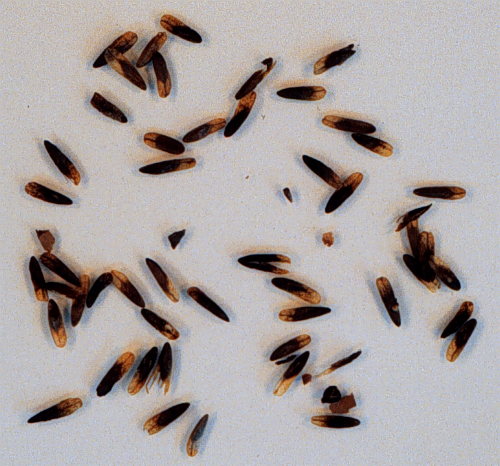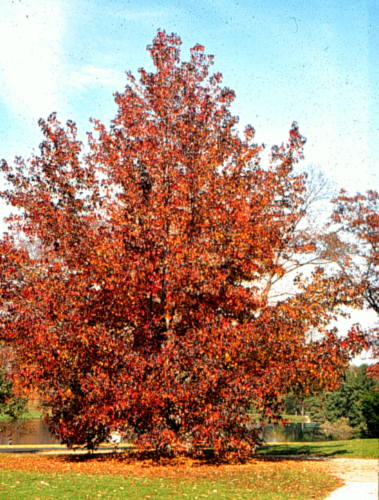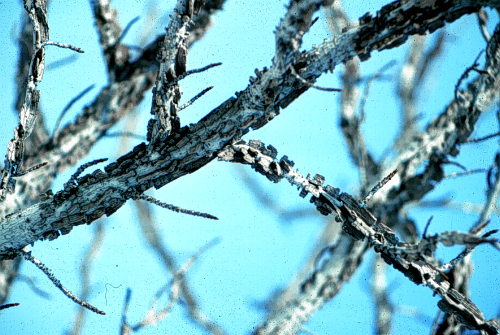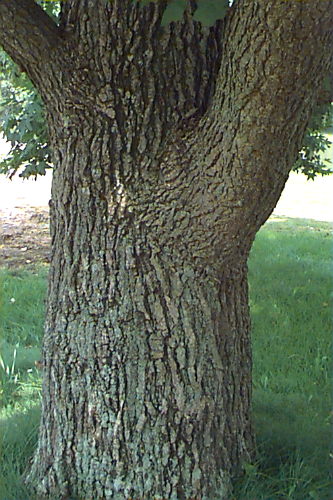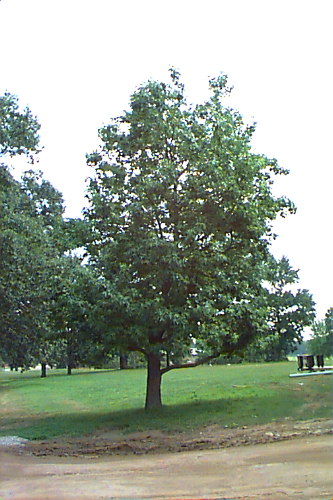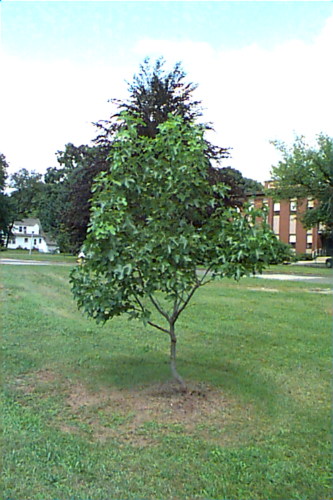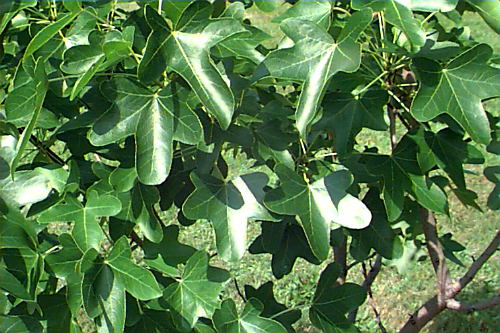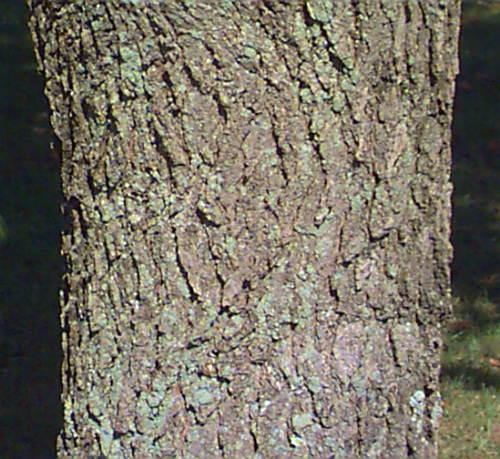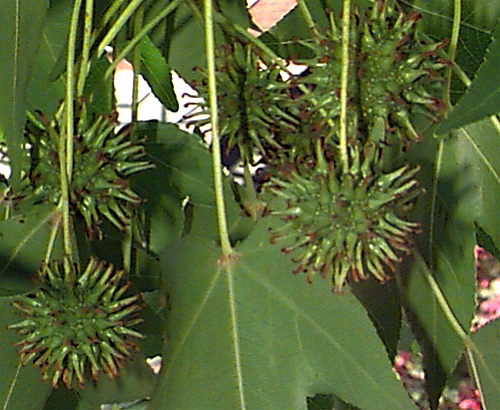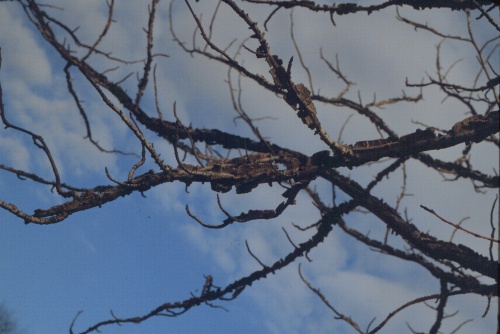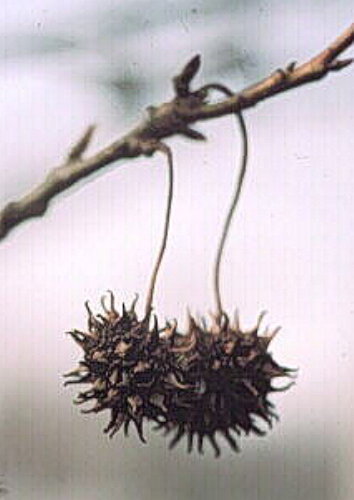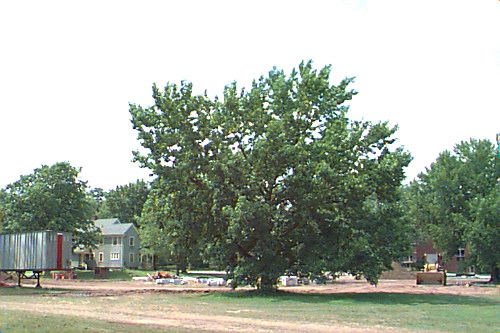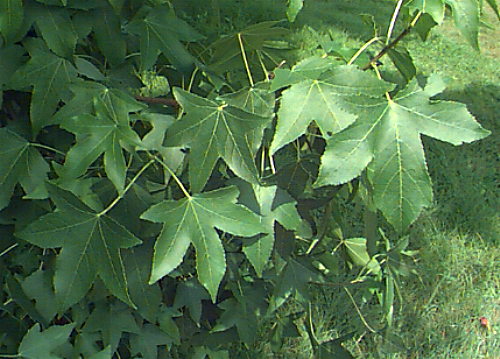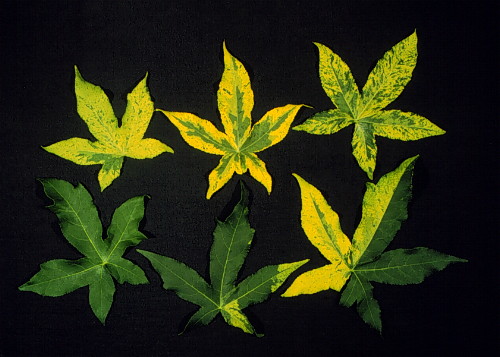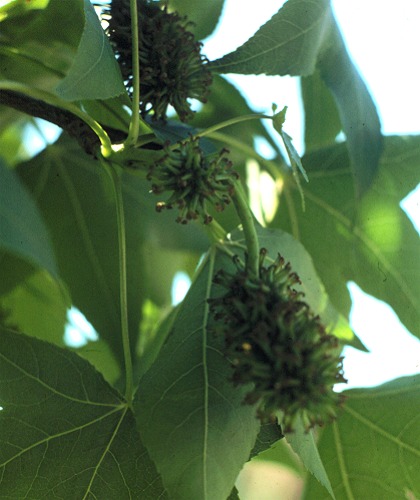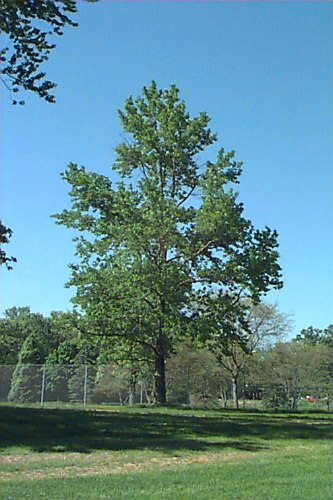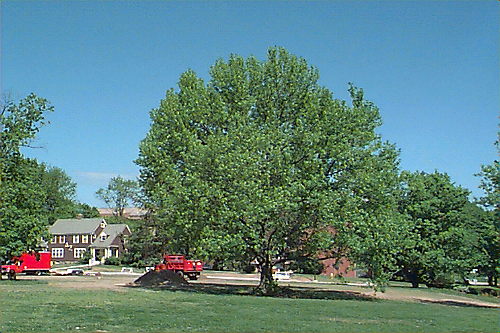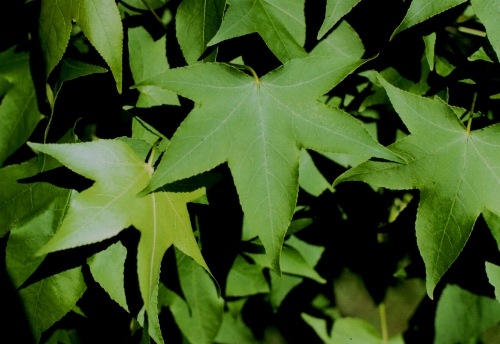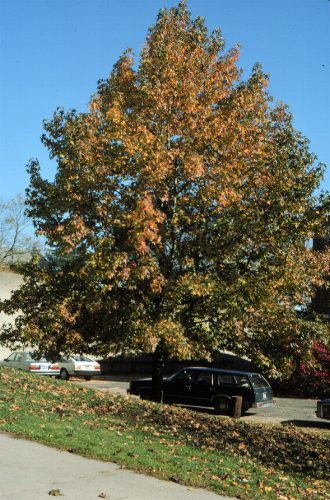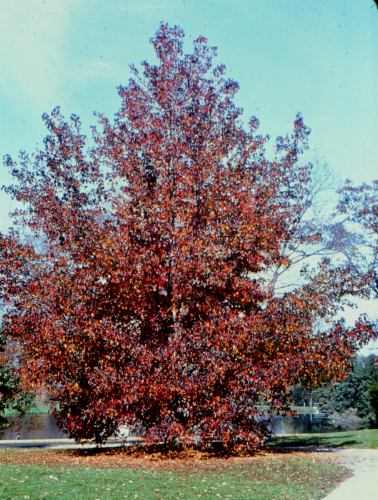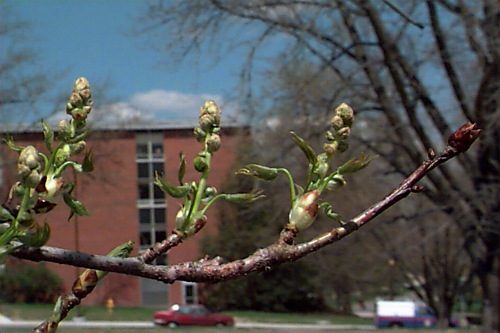Liquidambar styraciflua
American Sweetgum
Hamamelidaceae
ExpandHabitat
- cold hardy to zone 5
- native to Eastern United States, from Southwestern Connecticut to Florida
- also found in Mountains of Mexico and Guatemala
Habit and Form
- deciduous shade tree
- typically 60 to 80' tall and 40 to 60' wide
- can easily exceed 100' tall
- Pyramidal when young, oblong to rounded when mature
- usually maintains a single leader
- medium to fast grower
Summer Foliage
- alternate "maple-like" star shaped leaves
- leaves are 5- to 7- lobed, 4 to 8" long and wide
- margins serrate
- dark to medium glossy green
- camphor odor when crushed
Autumn Foliage
- typically quite showy on most individuals
- best trees are orange, red, burgundy, and purplish
- some trees drop leaves yellow and green
Flowers
- monoecious
- yellowish-green in May
- not showy
Fruit
- 1 to 1.5" spiny balls; change from green to brown
- look like a mace weapon
- become noticeable in the late summer and fall
- persist in winter
Bark
- grayish brown
- deeply furrowed with narrow ridges
- stem bark is reddish or yellowish brown and shiny
- some trees develop interesting corky ridges on 2 year old stems
Culture
- prefer deep, moist, bottomland soils
- best in full sun, does okay in partial shade
- transplant B&B due to fleshy, coarse root system
- use larger plants when transplanting in colder areas to avoid cold injury to twigs
Landscape Uses
- lawn tree or shade tree for larger residences
- for fall color
- street tree where ample room is provided
- parks and campuses
Liabilities
- chlorosis on high pH soils
- lack of cold hardiness, especially young trees
- because of wide geographical range it is important to use northern seed sources for trees in New England or the Northeast
- has a shallow root system
- spiny fruit balls can be a litter problem
ID Features
- distinguish from maples because leaves are alternate
- aromatic foliage
- distinct shiny fruit balls
- star shaped pith
- relatively large terminal and flower buds
- corky ridges on stems (often absent)
- for young trees habit is distinctly pyramidal
Propagation
- very easy form seed
- cultivars must be grafted or micro-propagated
Cultivars/Varieties
'Grazam' (Grandmaster™) - This new pyramidal selection grows 50' tall and wide with glossy green leaves that turn shades of red-purple and orange in fall.
'Gumball' and 'Oconee' - These cultivars are both notable for their dwarf, multi-stemmed shrubby habit to 15' tall with a smaller spread. They exhibit good fall color, with 'Oconee' expressing better cold-hardiness.
'Moraine' - Probably the most common cultivar in the industry, this
plant has a uniform upright rounded habit. It is faster growing and more hardy
than other forms, plus it features good red fall color.
'Rotundiloba' -This is an interesting form whose leaves have rounded lobes. It appears to set fruit rarely or never. The degree of fall color varies widely each year; in addition the tree can develop narrow branch crotch angles and a more open habit. It is probably only cold hardy to -10, but a tree in Storrs, CT has survived several winters without injury. Due to its non-fruiting habit, it may be a viable choice for warmer zones.
"Shadow Columnar Form" - An as yet unnamed selection with a remarkable fastigiate, columnar habit. Woody plant expert Michael Dirr feels this plant has great commercial potential.
'Variegata' (may be the same as 'Aurea' and 'Goduzam' (Gold
Dust™))- One of the finest variegated, hardy shade trees, this plant
is a strong grower to 60' tall with a narrower spread. The leaves are mottled
with cream areas that intensify as the season progresses. The habit is oval-rounded
and the plant exhibits good cold-hardiness. Other variegated forms include 'Silver
King' and 'Golden Treasure', with margined leaves.

